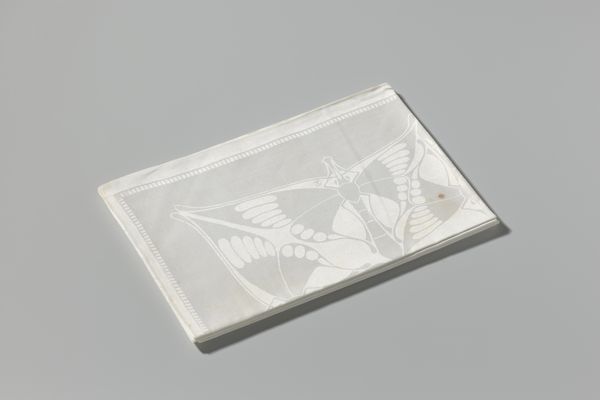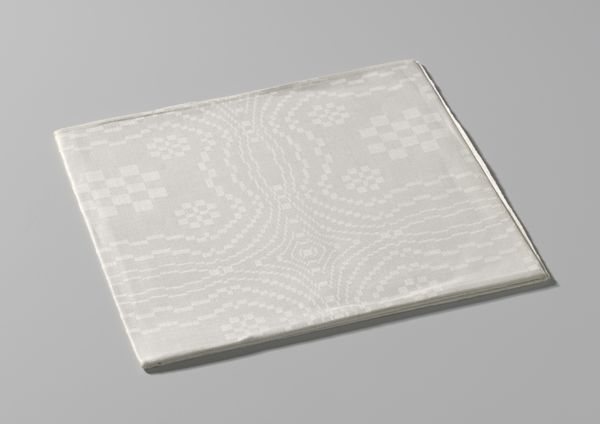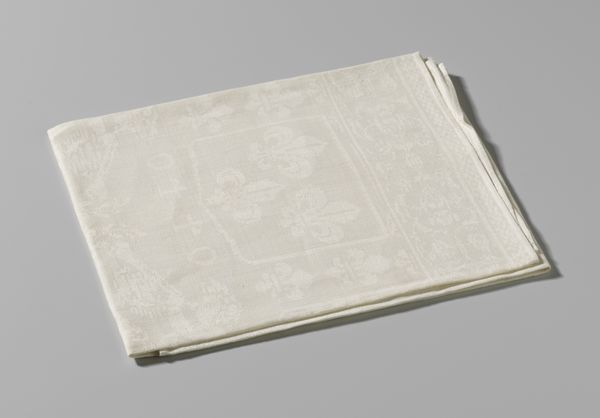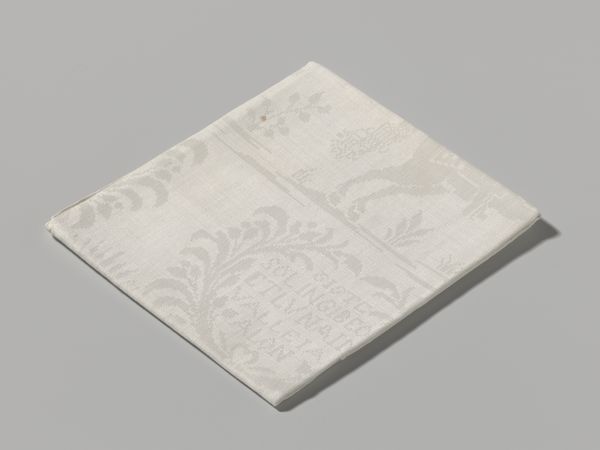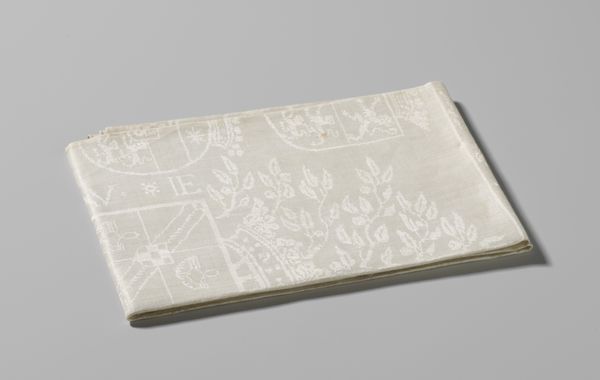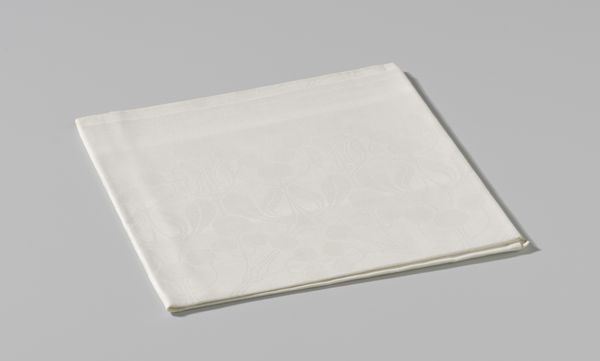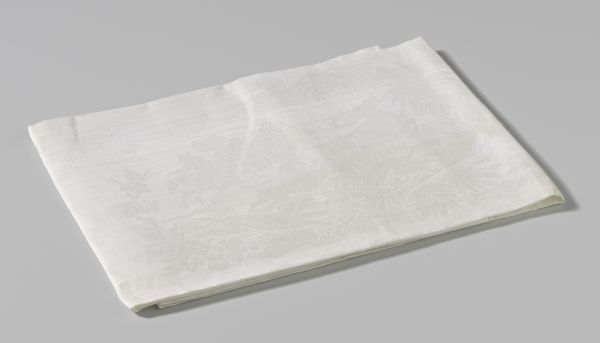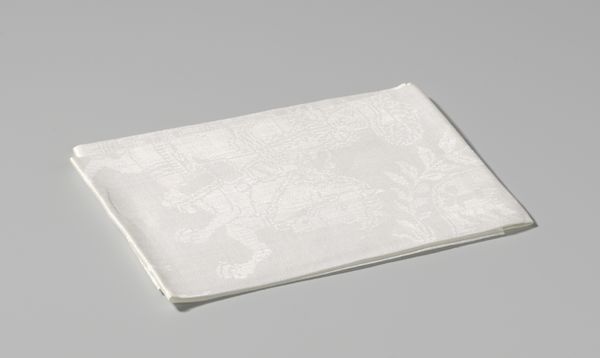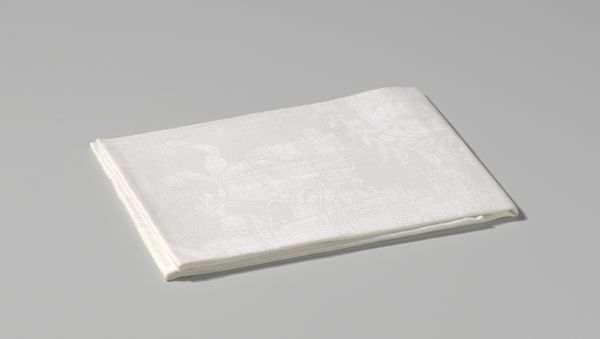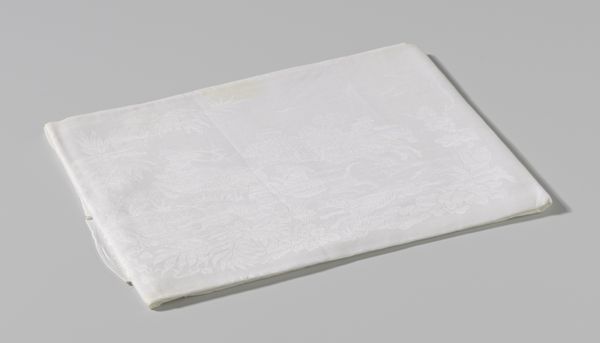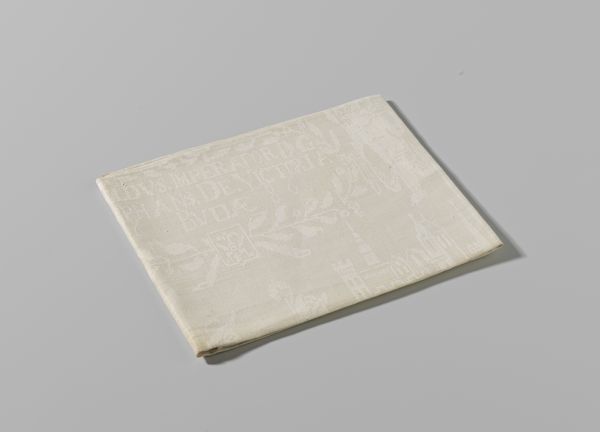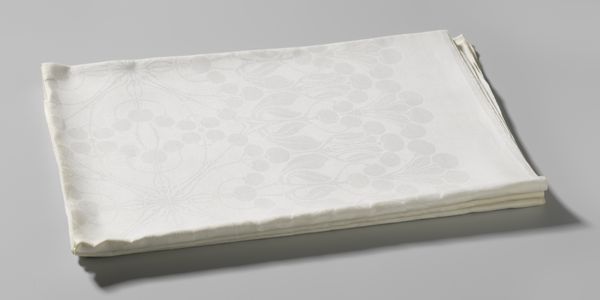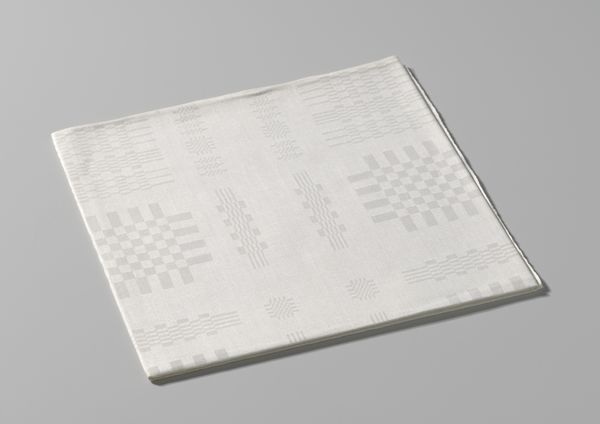
textile
#
art-nouveau
#
textile
#
decorative-art
Dimensions: length 71.0 cm, width 70.0 cm
Copyright: Rijks Museum: Open Domain
Editor: This delicately patterned object is a linen damask napkin, titled "Servet 'Vlinder'", or "Napkin 'Butterfly'," by Chris Lebeau, dating from 1905. It exudes a quiet elegance, doesn't it? What structural aspects of the piece stand out to you? Curator: Its compositional structure reveals a profound engagement with the principles of Art Nouveau. Consider how the curvilinear forms of the butterfly motifs are subtly integrated, not merely superimposed. Observe how the pattern interacts with the weave itself to dictate your perception. Do you discern the visual rhythm created by the alternating large and small butterfly images? Editor: I see the butterflies now, especially the way the pattern is woven into the fabric. The larger butterfly design really anchors the composition. Is that a deliberate choice, or does it speak more to the technical limitations of the textile medium at the time? Curator: Technical considerations always inform artistic creation, but here, I perceive a deliberate manipulation of the medium to emphasize the ethereal quality of the butterfly. Notice how the negative space around the motifs is as crucial as the woven design itself; consider the formal dialectic between presence and absence. Note also the very restricted pallete, as this enforces the unity between its design elements. Editor: That's a great way of phrasing it - presence and absence. I’m seeing now that Lebeau didn't simply decorate a napkin; they orchestrated a play of light and texture through the considered use of textile structure. Curator: Precisely. It’s an object lesson in how formal elements can transcend mere utility to attain artistic expression, don't you agree? Editor: I completely agree! I initially saw only a functional object, but now I appreciate its artistic ingenuity. Curator: Yes, indeed, and that speaks to the efficacy of studying material culture through an informed aesthetic lens.
Comments
No comments
Be the first to comment and join the conversation on the ultimate creative platform.
